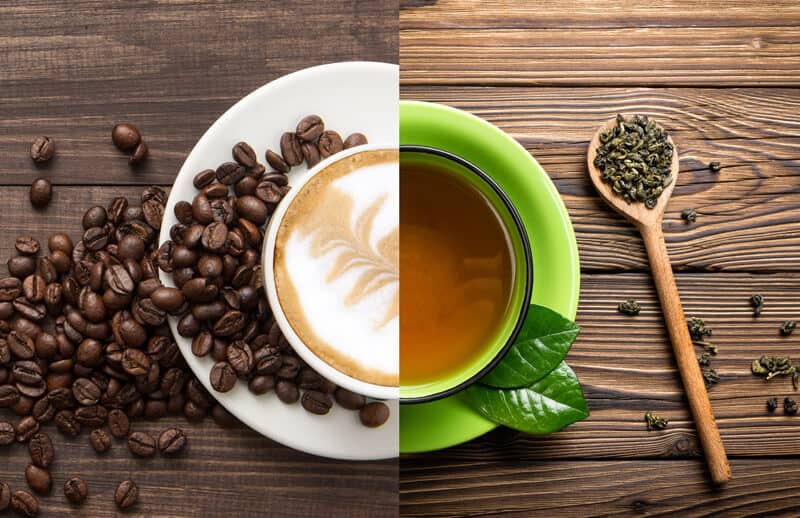
All arizona iced teas contain caffeine. Comparing coffee and tea to other caffeine sources.

20, 21 in japan, 47% and 53% of adults drink coffee and green tea, respectively, every day.
Caffeine in coffee and tea. For example, a mug of tazo. Caffeine is the most studied and consumed stimulant in the world (2, 3).present in many common beverages, including coffee and tea,. Coffee tea caffeine caffeinated coffee decaffeinated coffee:
The average cup of coffee has about 100 mg of caffeine. Black, green, and white teas are prepared from leaves of the same plant, camellia sinensis. ≤ 57.53 mg/d ≥4 cups/d vs.
All arizona iced teas contain caffeine. Tea leaves are around 3 grams in weight per leaf. The same amount of black tea has 40 to 60 milligrams, while green tea has just 15 milligrams.
However, unlike coffee, tea has an incredibly pleasant taste, aroma, flavor as well as numerous health properties. Caffeine in coffee or green tea is widely used as a central. 96 milligrams of caffeine in the average cup decaffeinated brewed coffee:
Many snapple iced tea varieties contain 42. 22 both coffee and green tea contain many biological active constituents, including polyphenols and alkaloids 23, 24; They have as much caffeine as unbrewed coffee beans, having around 5% and 1 mg.
Green tea, on the other hand, has less caffeine than coffee or soda. One 8 ounce cup of instant coffee has slightly less caffeine than a regular cup of coffee. Coffee and tea are two of the most widely consumed beverages in the world.
While coffee is generally consumed in the west, tea is the main source of caffeine in the east. If you want to avoid or limit your caffeine consumption, replace your espresso shot with decaf coffee, decaffeinated tea, or instant coffee. It was later shown that the theine of tea was identical with the caffeine of coffee, and the term theine was then dropped.”
English breakfast tea or black tea tends to come in at around 42mg per mug, says caffeine informer. The preparation method greatly impacts the caffeine content of tea. Caffeine in iced teas snapple iced tea.
62 milligrams decaffeinated instant coffee: Bottled iced teas also contain varying amounts of caffeine. The only two things that�s certain are:
The values are given as a range as the exact values do vary on the type of tea and coffee used, the brew time as well as the brew strength. The bottom line brewed coffee: But much like coffee, a few factors can alter this number, such as the brand of tea (lipton, pg tips, yorkshire tea, etc).
Comparing coffee and tea to other caffeine sources. 20, 21 in japan, 47% and 53% of adults drink coffee and green tea, respectively, every day. Pregnant women should consume no more than 200 mg of caffeine per day.
Both coffee and tea are naturally caffeinated. Decaffeinated tea has only 3 to 15 mg per 8 oz cup. Previously, it had listed black tea as having around 47mg per mug.
In all seriousness, tea has 2% caffeine, but you’re right; In general, though, here�s what we know: Does tea leaves have more caffeine than coffee?
Caffeine content varies by beverage type and preparation tea varieties. 2 milligrams (yes, decaf coffee does contain a little residual caffeine) instant coffee: “originally called theine, caffeine was first discovered in tea in 1827.
6 rows check the charts for an idea of the caffeine content in popular beverages. It just depends on how you brew your tea up when determining the amount of caffeine you actually consume. Caffeine and theine are the same thing (or the same molecule to be exact).
Caffeine content of popular drinks.